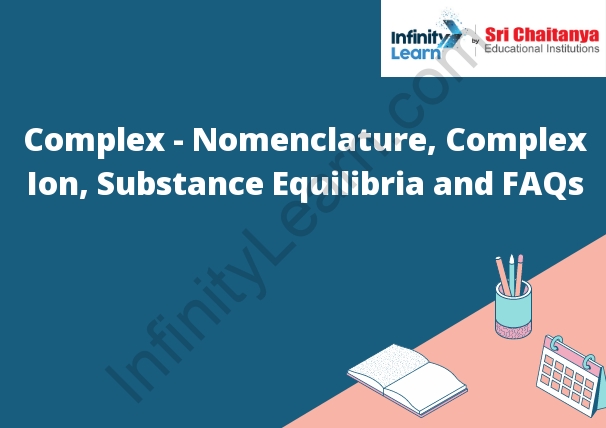Table of Contents
What is Complex?
The word complex has a few different meanings, but in general it refers to something that is made up of many different parts. A complex sentence, for example, has a subject and a predicate, and often includes modifiers, objects, and other dependent clauses. A complex number, meanwhile, is a number that includes a real number and an imaginary number.

What is the Meaning of Complex?
A complex is a group of buildings, usually large and imposing, that are used for a particular purpose, such as a university, hospital, or prison.
Nomenclature in Complex Chemistry
Naming inorganic complexes can be difficult because there are so many possible ways to name them. The complexity arises from the fact that there are many possible ligands that can bind to a central metal ion, and each ligand can have a variety of possible substituents. In order to name a complex, you must first identify the central metal ion and the ligands bound to it. This can be done using a variety of methods, including spectroscopy, X-ray crystallography, and chemical analysis. Once the metal ion and ligands are identified, the complex can be named using the Stock System. The Stock System uses a prefix to indicate the number of ligands attached to the metal ion, a suffix to indicate the type of ligand, and a number to indicate the order of attachment. For example, a complex with two ligands attached to a metal ion would be named “dichloro”, a complex with three ligands attached to a metal ion would be named “trichloro”, and so on. If a complex has more than one type of ligand, the suffixes are listed in alphabetical order. The Stock System can be used to name both simple and complex molecules.
Ion in Complex Chemistry
In ionic complexes, atoms of different elements are joined together by ionic bonds. Ionic complexes are formed when a metal atom loses one or more electrons to form a positively charged ion (cation) and a non-metal atom gains one or more electrons to form a negatively charged ion (anion). These oppositely charged ions are then attracted to each other and form a complex.
Ionic complexes are usually very stable, meaning that they are very difficult to break apart. This stability is due to the strong ionic bonds that hold the atoms together. In addition, many ionic complexes have very low reactivity, meaning that they do not easily react with other substances. This is also due to the strong ionic bonds.
Complex Ion Equilibria
The chemical equilibria between ions in solution are very important in many chemical processes. In order to understand these equilibria, we need to be able to predict the concentrations of ions in solution.
The concentration of an ion in solution is determined by the equilibrium between the ion and the molecules or ions of water. In aqueous solution, water molecules can dissociate into hydrogen ions and hydroxide ions.
\[H_2O \rightleftharpoons H^+ + OH^-\]
The equilibrium constant, K w , for this reaction is
\[K_w = [H^+][OH^-] = 1.0 \times 10^{-14}\]
This equilibrium constant is very small, which means that the concentration of hydrogen ions and hydroxide ions is very low in aqueous solution.
The concentration of an ion in solution can also be affected by the equilibrium between the ion and other ions in solution. In aqueous solution, ions can form complexes with other ions.
The equilibrium constant, K c , for the formation of a complex ion is
\[K_c = [A][B]^n\]
where [A] is the concentration of the complexing agent, [B] is the concentration of the complexed ion, and n is the stoichiometric number of complexing agent molecules per complexed
Complex Substance Equilibria
copper(II) oxide
CuO(s)
copper(II) sulfate
CuSO 4 (s)
copper(II) chloride
CuCl 2 (s)
copper(II) iodide
CuI(s)
copper(II) bromide
CuBr 2 (s)
copper(II) nitrate
Cu(NO 3 ) 2 (s)
copper(II) acetate
Cu(CH 3 COO) 2 (s)
copper(II) carbonate
CuCO 3 (s)
copper(II) sulfide
CuS(s)
copper(II) oxide can react with copper(II) sulfate to produce copper(II) sulfide and water:
CuO(s) + CuSO 4 (s) → CuS(s) + H 2 O(l)








